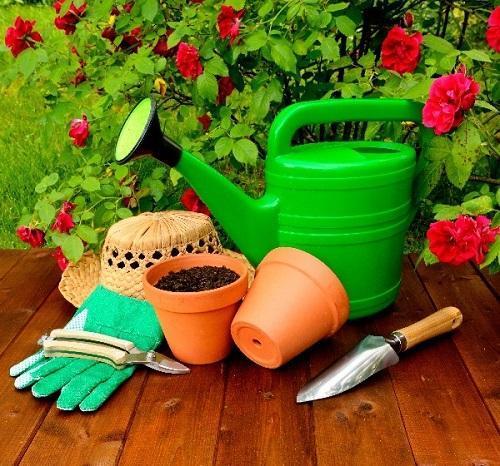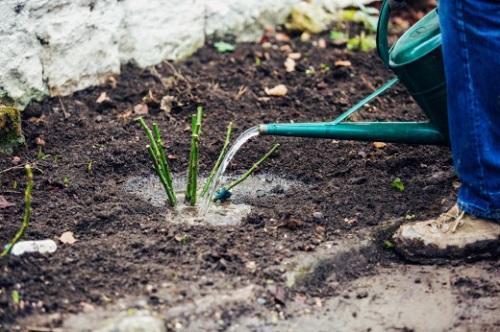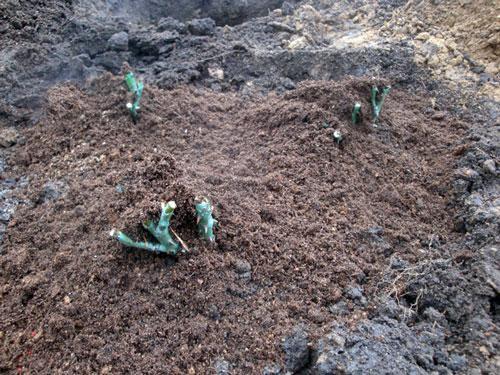We provide roses with good care after spring planting
Among the variety of flowers in a flower bed, the rose is always in the first place. After all, nothing beats its beauty and exquisite appearance of buds. To raise a real queen, you need to give her a little attention, especially at first beginnings.

From correct care for roses after their spring planting, its further growth and flowering depends. The main points to look out for when caring for young rose seedlings in spring are:
- compliance with watering rules;
- care of the soil around the seedling;
- disease prevention;
- timely fertilization;
- the formation of the future bush.
Compliance with watering rules

Rose is a very moisture-loving plant. After planting, the seedling must be watered daily, and then once a week. For irrigation, use settled warm water, preferably rainwater. The best time to water is in the early morning or evening when the sun is less active. Leaves exposed to water are burned by sunlight.
Roses should be watered strictly at the root.
Caring for the soil around the seedling

After glaze cover the ground around the bush with sawdust or compost. Mulch will save the roots from erosion during subsequent watering and will prevent the rapid evaporation of moisture.
To provide the rose root system with a constant access of oxygen, the land around the bush must be loosened regularly until the very autumn cold snap. With the arrival of autumn, stop loosening, and lightly tamp the soil around the bush.
Prevention and control of rose diseases

Rose bushes are often affected by powdery mildew. To prevent this, in the spring, roses are treated with a solution of copper sulfate at the rate of 100 g per bucket of water. And if the moment for processing was missed, and the disease nevertheless struck the bush, solutions with the use of the following drugs worked well in its treatment:
- "Topaz" - 4 ml of the drug is needed for a bucket of water.
- "Skor" - in a bucket of water - 2 ml of the drug.
- Colloidal sulfur - 40 g of sulfur for half a bucket of water.
For pest control, a solution of copper-soap liquid and a Bordeaux mixture are used.
Timely fertilization

The best fertilizers for roses are organic fertilizers such as slurry. Applying four dressings per season will provide the bush with all the necessary nutrients for growth and flowering. The first feeding can be done in mid-June, and the last one no later than mid-August.
To prepare liquid fertilizer, dilute 1 part of mullein in 3 parts of water and leave for 10 days to infuse. When directly preparing top dressing, dilute 1 part of this mixture with 10 parts of water.
Before fertilizing, the ground around the bush must be well moistened, and only then the rose must be fed with fertilizer at the rate of 3 liters per bush.
Formation of the future bush

Experienced flower growers recommend that in the first year of a rose's life, do not give it the opportunity to bloom, so that young seedlings gain strength and give abundant flowering next season. To do this, you need to remove the buds from the bushes, leaving one flower per shoot.
Further formation of the bush consists in pinching all lateral shoots after the fourth leaf until the bush reaches the desired shape.
During the summer, it is periodically necessary to remove wild growth.
With the arrival of next spring, the bush will need to be carefully examined for dry shoots. If dry and frozen shoots are found, they should be cut with pruning shears.